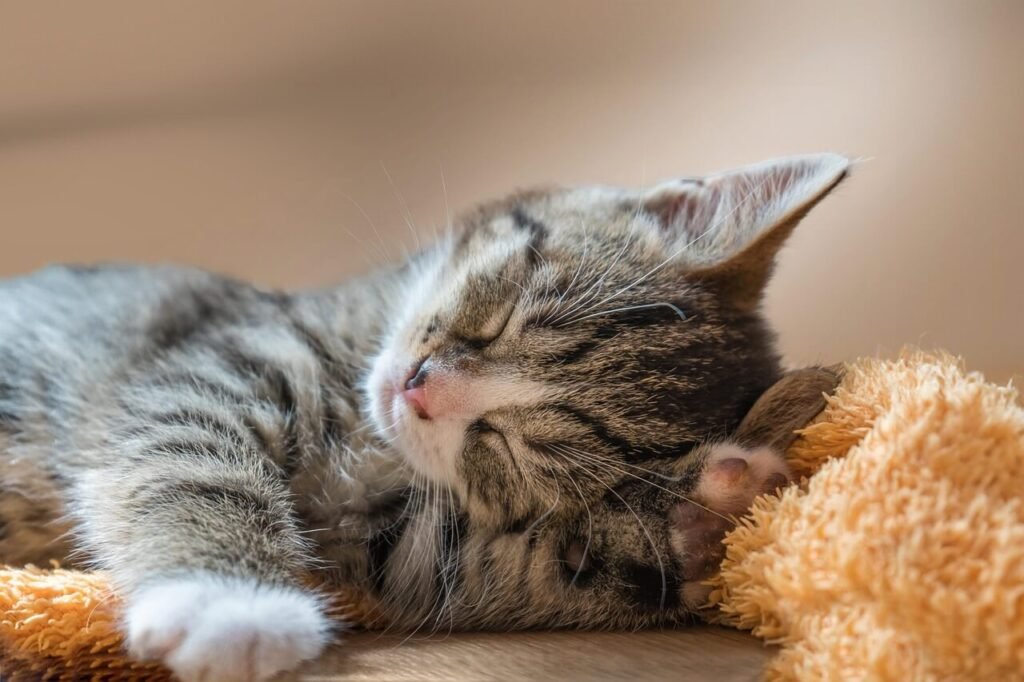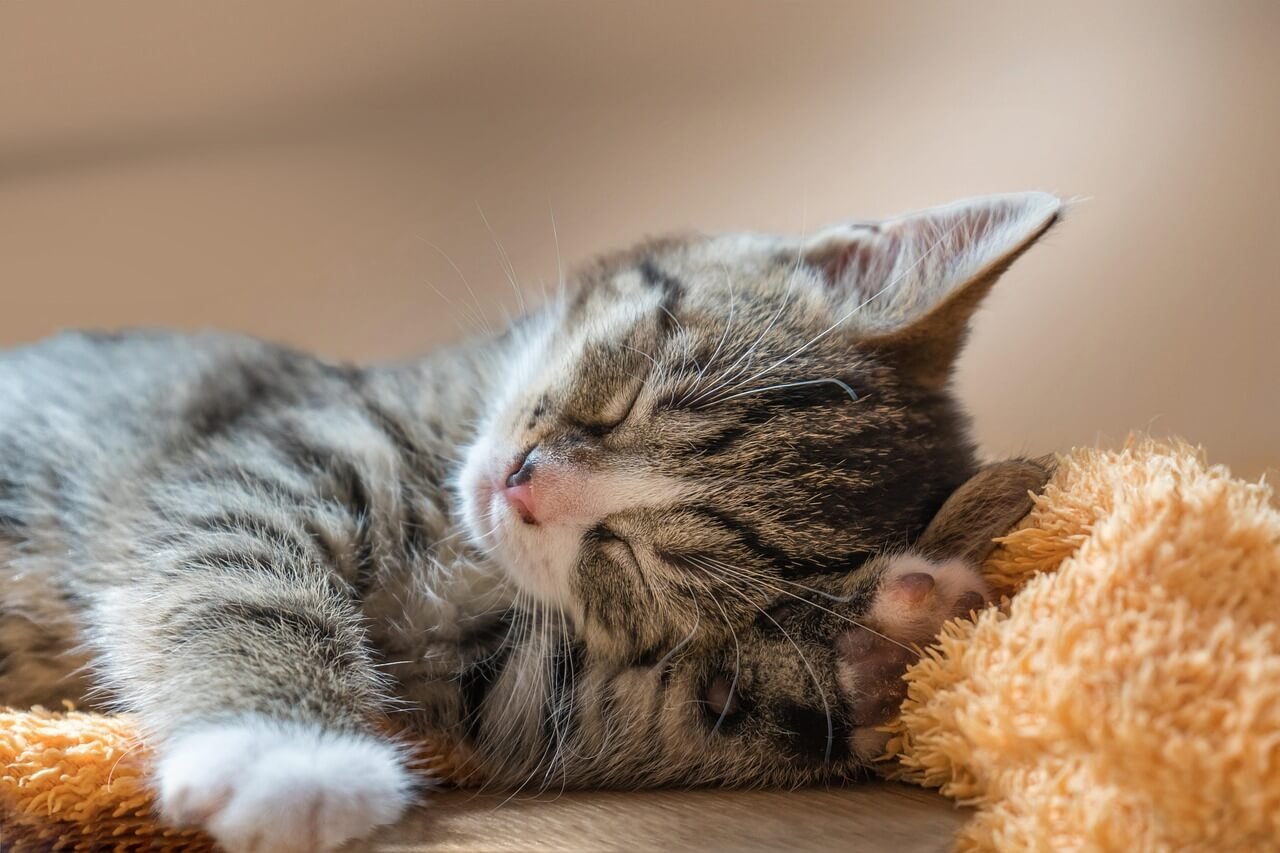Are Mice Scared of Cats? Unpacking the Predator-Prey Dynamic
The age-old rivalry between cats and mice has been immortalized in cartoons, folklore, and even our everyday language. But is it true that mice are inherently scared of cats? The answer lies in understanding the intricate relationship between predator and prey—a dynamic shaped by millions of years of evolution. For mice, cats represent a significant threat, but their fear isn’t just instinctual; it’s also influenced by environmental factors, individual experiences, and even biology.
In this blog post, we’ll explore why mice fear cats, how this fear manifests, and what happens when this natural balance is disrupted. Whether you’re a pet owner, a nature enthusiast, or simply curious about animal behavior, this deep dive into the world of cats and mice will shed light on one of nature’s most fascinating dynamics.
Why Are Mice Naturally Afraid of Cats?
Mice have evolved to fear cats as part of their survival instincts. This fear is deeply rooted in their biology and environment, ensuring they avoid predators whenever possible. Here’s why mice are naturally scared of cats:
Innate Fear Response
Mice are born with an instinctual aversion to the scent and presence of cats, which helps them avoid danger from birth.Chemical Signals in Cat Urine
Cats release chemical compounds in their urine, such as felinine, which trigger fear responses in mice through olfactory cues.Acute Sensory Awareness
Mice have highly sensitive hearing and smell, allowing them to detect the faintest sounds or scents of a nearby cat.Historical Evolutionary Pressure
Over millennia, mice that avoided cats were more likely to survive and reproduce, passing on genes that prioritize predator avoidance.Cat Behavior as a Threat
The stalking, pouncing, and hunting behaviors exhibited by cats are unmistakable threats to mice, reinforcing their fear.
This combination of biological and environmental factors ensures that mice remain wary of cats, a crucial adaptation for their survival. However, not all interactions between cats and mice follow this pattern, as we’ll explore later.
How Mice React to the Presence of Cats
When mice encounter cats or signs of their presence, their reactions are both immediate and strategic. These behaviors highlight their fear and demonstrate how they attempt to evade predators. Here’s how mice typically respond:
Freezing in Place
Mice often freeze momentarily to avoid detection, relying on their camouflage to blend into the surroundings.Fleeing Quickly
If spotted, mice will dart away rapidly, using their agility and speed to escape.Avoiding Cat-Scented Areas
Mice tend to steer clear of areas marked by cat urine or fur, recognizing these as high-risk zones.Changing Activity Patterns
Mice may shift their activity to times when cats are less active, such as during the day or late at night.Building Secure Nests
To reduce vulnerability, mice construct nests in hidden, hard-to-reach locations where cats cannot easily access them.
These adaptive strategies showcase how mice use their intelligence and instincts to minimize encounters with cats. While fear drives these actions, they also reflect the resilience of mice in the face of constant threats.
Check this guide 👉Do Cats Eat Mice? Best 7 Health Tips!

Signs That Mice Fear Cats | How Mice Respond to These Signs |
|---|---|
Scent of cat urine | Avoid areas with strong feline odors |
Sound of a cat’s meow or movement | Freeze or flee immediately |
Visual sighting of a cat | Run to safety or hide |
Presence of cat fur or tracks | Alter travel routes and nesting habits |
Stalking behavior from a cat | Increase vigilance and defensive actions |
Factors That Influence Mice’s Fear of Cats
While mice are generally afraid of cats, several factors can influence the intensity of their fear or their ability to avoid predation. Here’s a closer look at these variables:
Previous Encounters
Mice that have survived encounters with cats may develop heightened fear or avoidance behaviors.Environmental Cues
Urban environments with fewer hiding spots may increase stress levels in mice, making them more vigilant.Health and Age
Younger or weaker mice may be less capable of evading cats, while healthier mice are better equipped to escape.Presence of Other Predators
If other predators, like birds of prey or snakes, are present, mice may prioritize those threats over cats.Human Intervention
In homes where humans feed mice or keep cats indoors, mice may become bolder and less fearful of felines.
Understanding these factors reveals the complexity of the predator-prey relationship. While fear is a constant, external influences can shape how mice perceive and react to cats.
What Happens When Mice Don’t Fear Cats?
In rare cases, mice may lose their natural fear of cats due to genetic mutations, environmental changes, or disruptions in predator-prey dynamics. Here’s what happens when this occurs:
Increased Vulnerability
Without fear, mice are more likely to wander into dangerous areas, making them easy targets for cats.Disruption of Ecosystem Balance
A lack of fear can lead to overpopulation of mice, affecting crops, food supplies, and disease transmission.Bold Behavior Around Cats
Mice may approach cats curiously or ignore their presence entirely, increasing the likelihood of being caught.Genetic Mutations
Some studies suggest that certain genetic modifications can eliminate mice’s fear response to cat pheromones.Artificial Environments
In lab settings or controlled environments, mice may lose their fear due to repeated exposure without consequences.
While these scenarios are uncommon in the wild, they highlight the delicate balance of nature. A healthy fear of predators is essential for maintaining ecological harmony.
Fun Facts About Cats and Mice
The relationship between cats and mice is not just about fear—it’s also filled with fascinating facts that highlight the complexity of their interactions. Here are some intriguing tidbits:
Cats Don’t Always Eat Their Prey
Sometimes, cats will hunt mice simply for sport or practice, leaving the prey uneaten as a trophy.Mice Can Outsmart Cats
In certain situations, clever mice have been known to evade even the most skilled hunters by using their agility and quick reflexes.Scent Marking Is a Double-Edged Sword
While cats mark territory to deter mice, some bold mice use these scents to map safe zones away from danger.Domestication Changes Dynamics
Household environments can alter the traditional predator-prey dynamic, sometimes leading to coexistence between cats and mice.Feline Pheromones Affect Rodent Behavior
Studies show that exposure to specific cat pheromones triggers stress responses in mice, influencing their survival strategies.
These fun facts illustrate the depth of the cat-mouse relationship. It’s a delicate dance shaped by instinct, biology, and environment.
Signs Your Home Has Both Cats and Mice
If you’re unsure whether your home hosts both cats and mice, there are subtle signs to look out for. Here’s how to identify the presence of these two creatures:
Cat Behavior Changes
Increased alertness, stalking, or pawing at small spaces may indicate your cat has detected mice nearby.Unusual Noises at Night
Scratching or scurrying sounds could mean mice are active while your cat is on patrol.Droppings or Gnaw Marks
Mouse droppings or chewed wires suggest an infestation, which might attract your cat’s attention.Missing Food or Pet Treats
Mice often raid food sources, leaving behind evidence like torn packaging or crumbs.Cat Bringing You “Gifts”
If your cat starts bringing you dead or injured mice, it’s a clear sign they’ve encountered rodents in your home.
Recognizing these signs early can help you address potential issues before they escalate. Whether it’s managing pests or enriching your cat’s hunting instincts, being observant is key.
Tips for Managing Cats and Mice in Your Home
Living with both cats and mice requires careful management to maintain harmony and prevent problems. Here are some practical tips to handle this situation:
Seal Entry Points
Block cracks, holes, and gaps in walls or doors to prevent mice from entering your home.Keep Food Secure
Store pet food and human snacks in sealed containers to avoid attracting mice.Provide Mental Stimulation for Your Cat
Toys, puzzle feeders, and interactive play can redirect your cat’s hunting instincts toward safer activities.Use Natural Deterrents
Peppermint oil or ultrasonic repellents can discourage mice without harming your cat.Consult Professionals if Needed
For persistent mouse problems, seek humane pest control solutions that won’t endanger your pets.
By implementing these strategies, you can create a balanced environment where both cats and mice are managed effectively. Remember, prevention and patience are essential for maintaining peace in your household.
Frequently Asked Questions About Mice and Their Fear of Cats
Are all mice scared of cats?
Most mice exhibit a natural fear of cats, but exceptions exist due to genetics, environment, or learned behavior.
Can mice recognize individual cats?
Mice can distinguish between different predators based on scent, sound, and behavior, but they don’t “recognize” specific cats personally.
Do domesticated cats scare mice less than wild cats?
Domesticated cats still pose a threat to mice, though indoor pets may have less opportunity to hunt compared to outdoor or feral cats.
Can mice overcome their fear of cats?
In rare cases, mice may lose their fear due to genetic mutations or repeated exposure without negative outcomes, but this is uncommon.
How do cats benefit from mice’s fear?
Mice’s fear makes them easier to ambush and catch, giving cats an advantage in hunting.
The Delicate Dance Between Cats and Mice
The relationship between cats and mice is a prime example of nature’s intricate balance. While mice are naturally scared of cats, their fear serves as a vital mechanism for survival, driving behaviors that help them evade predation. At the same time, cats rely on this dynamic to fulfill their role as hunters. Understanding this interplay reminds us of the complexity of ecosystems and the importance of preserving natural relationships. Whether you’re dealing with a mouse problem at home or simply fascinated by animal behavior, appreciating the nuances of this predator-prey interaction can deepen your respect for the natural world. After all, every chase, every escape, and every moment of fear tells a story written by millions of years of evolution.
Understanding Cryptosporidium in Cats: Best 7 Expert Tips! – Spot symptoms, treat safely, and stop parasite spread in your home.
Understanding Cryptosporidium in Dogs: Best 7 Expert Tips! – Learn symptoms, treatment & prevention for this stubborn gut parasite.
Understanding Syringomyelia in Cats: Best 7 Expert Tips! – Recognize signs, manage pain, and support your cat’s neurological health with vet-backed guidance.
Understanding Syringomyelia in Dogs: Best 7 Expert Tips! – Expert insights on symptoms, MRI diagnosis, pain management & quality of life.





